NO PROBLEMS, ONLY CHALLENGES: CONSTRUCTING BASECAMP BAFFIN
Arctic Heliskiing Baffin Island
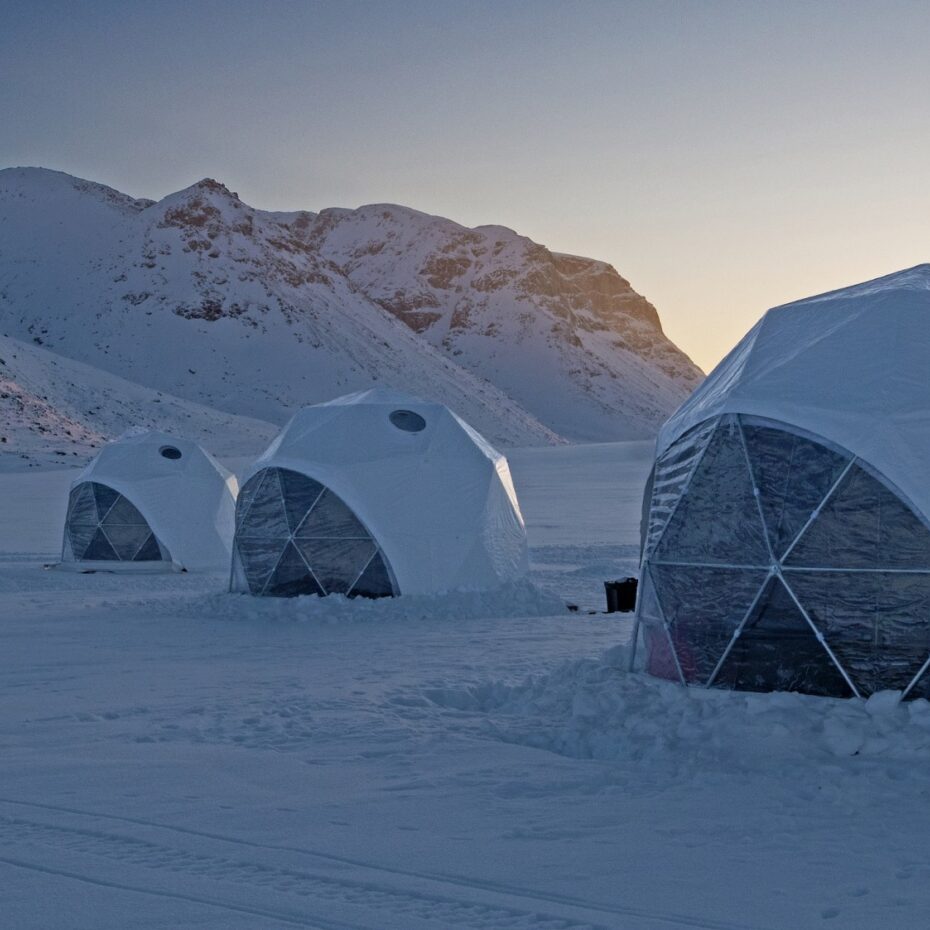
Arctic Heliskiing Baffin Island
February 13, 2020 | Basecamp Baffin: Arctic Skiing
Of all the bold schemes that get cooked up over après ski beers, probably not many end up becoming reality. But when, after a day in the mountains, the Weber family first started batting around the idea of establishing a heli-skiing operation in the Arctic, they recognized the same excitement and sense of rightness that had triggered successful projects in the past. They were passionate skiers—all four had been nationally ranked racers—with deep Arctic experience. Why not find a way to bring people into the pristine and unexplored terrain of Baffin Island for the freshest possible tracks?
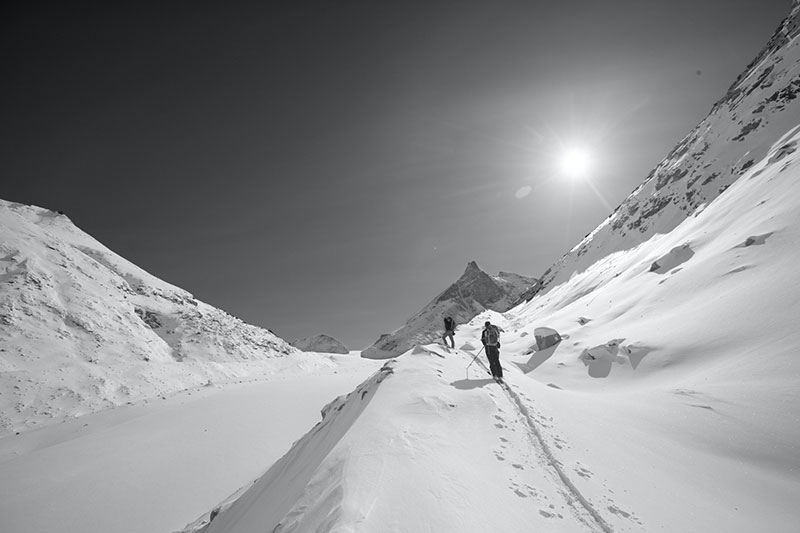
First step: reconnaissance. From the beginning, the younger generation of Webers took the lead, and for three springs, Tessum and Nansen Weber and Drew Nylen, a colleague and guide, headed to the community of Clyde River on Baffin’s east coast and spent a few weeks camping and exploring via snowmobile in the surrounding area. The skiing, they concluded, was excellent, though the season was brief, only about six weeks. One initial idea was to use a hotel in Clyde River as a base for heli-skiing, though the ease of booking existing lodgings was undermined by the logistical difficulty of transporting skiers the considerable distance from the town to the terrain. Since the Webers have long been inspired by their guests, it was fitting that the solution came from a guest. For his 65th birthday, a Weber Arctic loyalist told Tessum he wanted two trips: a week with his family at Arctic Watch, and a boys’ trip skiing on Baffin. “Why don’t you build me a camp?” he said.
“Sure,” Tessum said. “Just give me two years.”
Admittedly, there were some ifs. The first three—if the skiing was good enough, consistent enough, and accessible enough—had already been resolved. The next few were daunting: if a suitable camp site could be located and the camp itself designed and built to high standards of comfort while also being portable enough to be packed in sea containers. If a snowcat could pull a sea container 60 kilometers across snowy mountains and frozen rivers in extreme cold and intermittent blizzards and then do it all over again. If the right helicopter pilot could be brought on board. If guests were game. But, if each of these ifs could become a yes, then a heli-skiing operation on Baffin might actually be possible.
After more brainstorming, the Webers settled on the idea of using polar-modified geodesic domes for the main camp structures. The domes’ modular design would make them possible to assemble in a remote location and allow them to be transported inside 40-foot sea containers. The containers would be brought to Clyde River by the annual summer resupply vessel and then—hopefully—dragged on custom-made runnered frames out to the Webers’ chosen site using a snowcat. The site itself had the advantages of being on a lake in the Baffin fiords, which provided a source of abundant fresh water by drilling under the ice (melting snow would be too slow), and near enough to several glaciers for snowcat skiing. The site was also relatively close to town so fresh produce and supplies could be brought in regularly, and, in the off season, the camp would be packed back into the polar bear-proof containers and tucked into the mountains. Plenty of problems remained, but, fortunately, a core tenet of the Weber Arctic philosophy is that there are no problems, only challenges.
A year’s advance planning was necessary to get anything to Clyde River in time for spring, so the first of Tessum’s two asked-for years was spent listing and rounding up absolutely everything necessary to make a camp that was not only habitable but plush, with real beds, hot showers, sit-down meals, and even the possibility of a massage. This meant thinking of, accounting for, and sourcing in advance absolutely every element from flooring and insulation down to table linens and flatware. Procuring any forgotten item from Baffin would be extremely slow, if not impossible. After a test run assembling the camp at the Oregon headquarters of manufacturer Pacific Domes, the igloo-like structures were taken apart, packed into containers along with everything else and trucked to Montreal’s port in time for a July 1 deadline. In late summer, as the resupply vessel made its way among the communities on Baffin, the containers and secondhand snowcat were deposited at Clyde River, where they would wait through the winter until Nansen and Drew arrived in early spring to start tackling a few more ifs, a few more challenges.
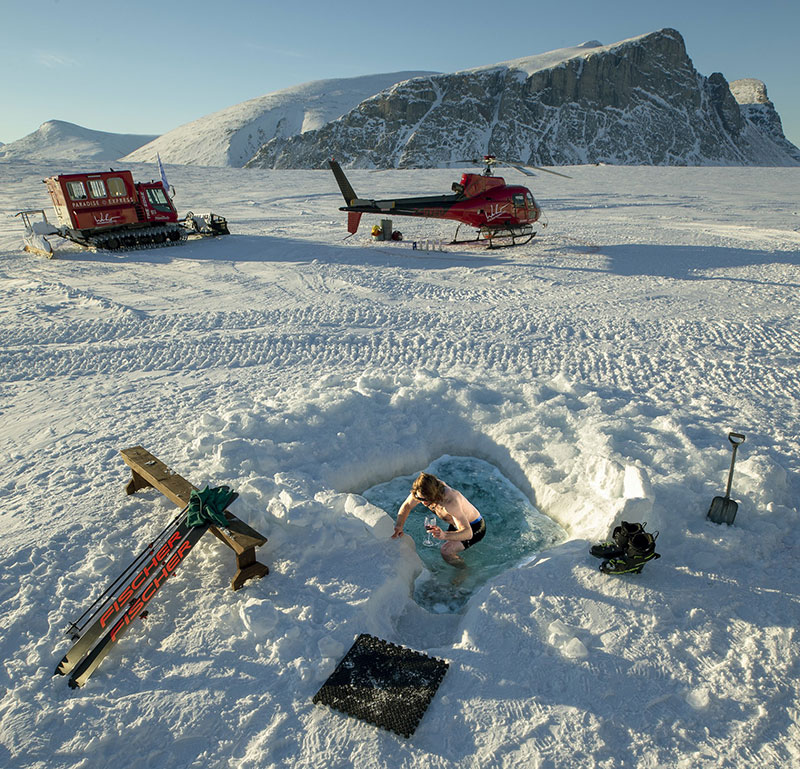
Their first task was to dig the containers and snowcat out from under a winter’s worth of snow drifts. The good news was the cat’s windows weren’t broken. The bad news was that it wouldn’t start—no surprise given that Clyde River’s average daily high in March is a brisk -20 Celsius. While the batteries charged, Nansen and Drew pondered a major question: would the machine be able to pull the 58,000 pound containers? They didn’t know. Nor did either actually quite know how to drive it. The first victory came when the engine turned over; the next came when they figured out how to drive and pulled a container a short distance down the road. It seemed the machine was up to the task, though only just.
A longtime Weber associate and mechanical mastermind known as Dr. Dave flew in to help drive the snowcat over the challenging (not problematic) route to the basecamp site. His expertise was needed almost immediately when, barely out of town, in howling winds, the cat’s cooling system failed. Nansen, confronting what had the potential to be a very serious challenge, started thinking through the time necessary to get spare parts (maybe a month) and a worst-case alternative plan (hire locals to transport everything by snowmobile), but Dr. Dave, living up to his reputation, fixed the system using only his Leatherman multitool. Onward again.
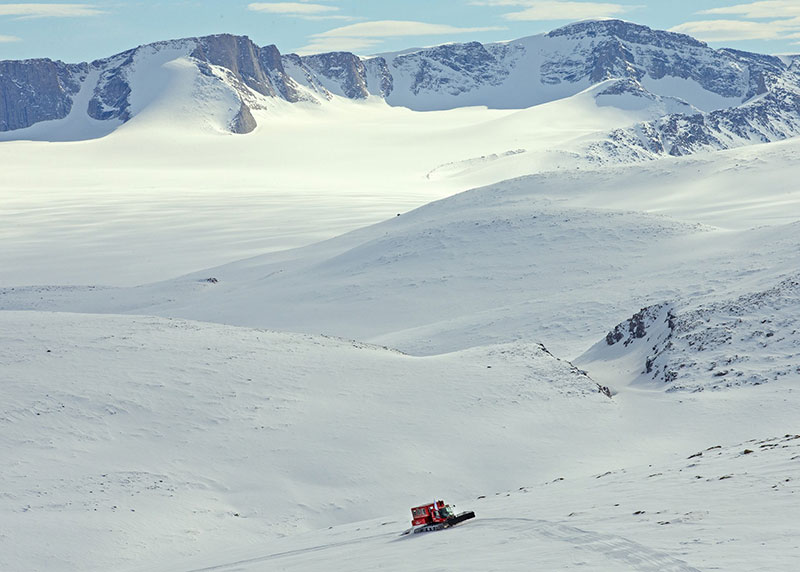
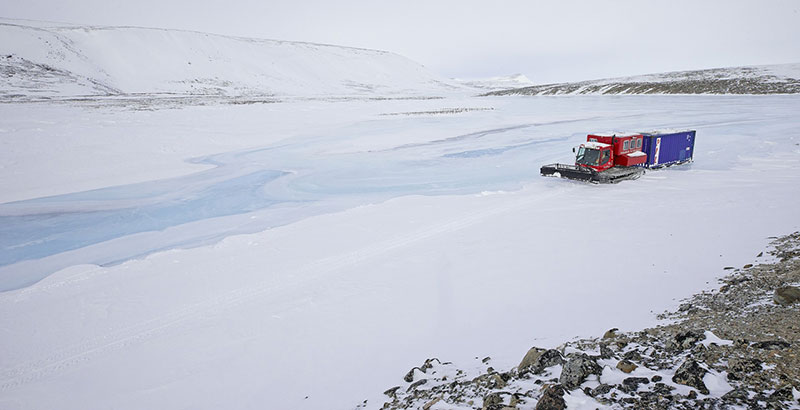
There was no trail, just a point A and a point B with plenty of boulders, mountains, and frozen rivers in between. After two days, less than halfway to the site, the first container got stuck in a snow drift and refused to budge. Rather than keep digging, the team decided to go get the second container. On the return journey, heavy weather set in, with temperatures dropping to 30 below and winds hitting 90 km/hr. Sometimes the only possible next step is to tie your tent to a sea container, pour yourself some whiskey and maple syrup, and wait. The days were ticking away toward when guests would arrive, and Nansen, sitting idle in the storm-rattled tent, couldn’t help but think through some more ifs. What if the domes didn’t work? What if someone, more than a year previously, had forgotten to pack a single bag of bolts or a bundle of insulation? What if they couldn’t get the container out of the drift? What if the snowcat fell through ice into a river?
After the storm lifted, the guys decided to drive to camp in just the snowcat to finish establishing a road. After that, they brought one container the rest of the way to the site. After that, they dug out the other and pulled it closer before the stubborn steel box got stuck again. It was still twenty kilometers from camp when Dr. Dave had to fly home. “Good luck,” he told Nansen, handing over the keys. By this point, Richard and more Weber team members had arrived to start building the camp, so Nansen had some help checking the thickness of the ice when he was on a frozen river and digging out when the can inevitably got stuck again. But then, with two weeks remaining before the first guests showed up, Nansen towed the second container into camp and vanquished a big if.
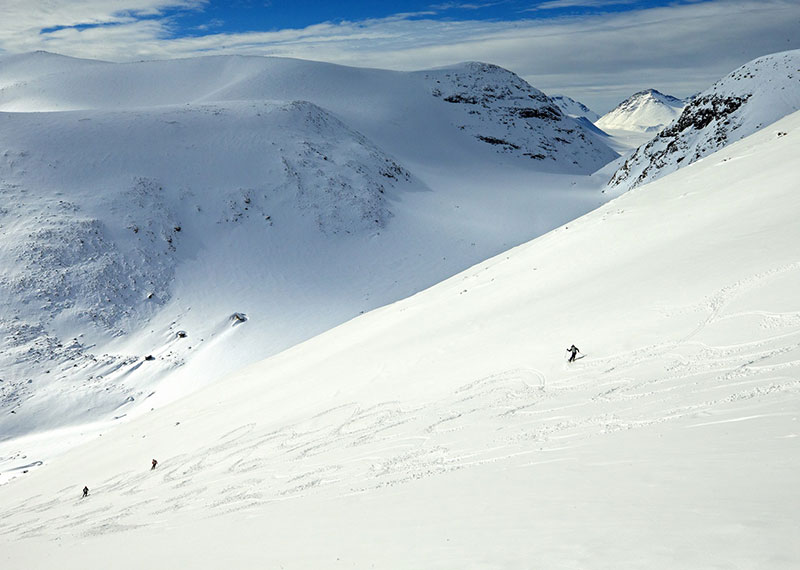
When the Webers first approached a helicopter company about their audacious plan of launching commercial skiing in Baffin, the answer was unequivocal: no, you’re crazy, it can’t be done. The second, third, and fourth companies were equally daunted by the logistics and remoteness, even when the Webers explained their detailed plans not only for normal operation but for any emergencies. World-class pilot Patrice Bellerose, though, of Panorama Helicopters, was in. The community of Clyde River was in, too, despite starting from a place of “Heli-what?” Wanting to assemble the best possible team, Tessum and Nansen had scouted for ski guides in British Columbia and found a few of the right individuals: massively experienced, cautious-yet-cowboy, without ego, not afraid to charge hard but also not afraid to pull the plug if conditions got hairy.
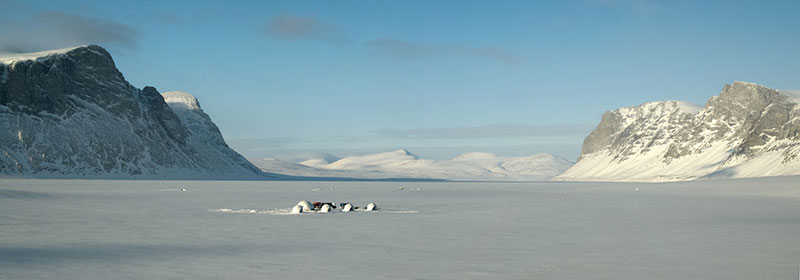
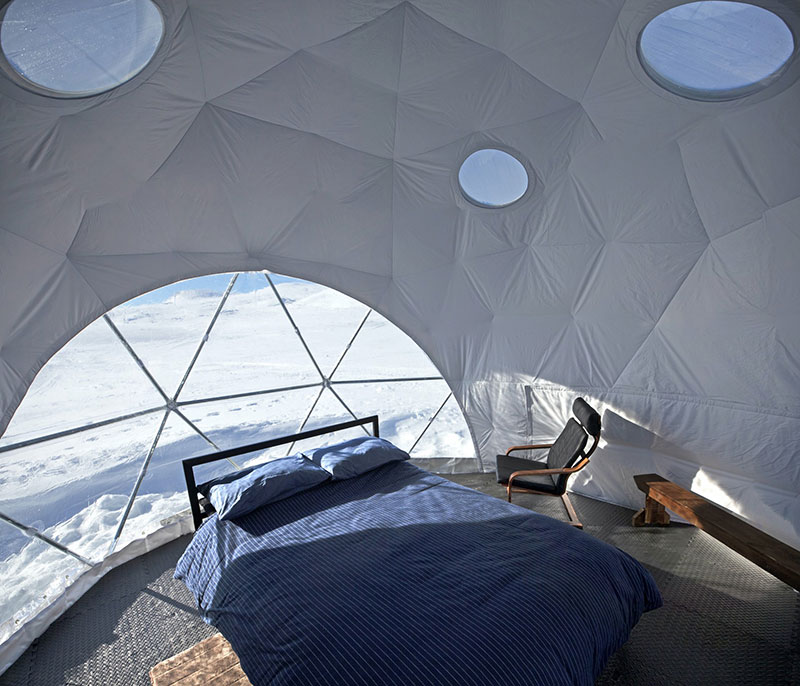
The personnel was in place. The containers had arrived, and now seventeen people living in tents were going to assemble a camp on a frozen lake. As the days lengthened and temperatures slowly climbed, the domes went up. The systems necessary for hot showers and hot food were put into place. Beds were made and the table was set. The guides scouted routes up skiable glaciers with the snowcat and its new driver, Nansen. Then, with the sound of a rotor in the distance, two years of preparation and ifs and challenges were over. The first guests arrived for the long-awaited rowdy boys’ birthday celebration, and the world’s northernmost heli-skiing operation was up and running: Basecamp Baffin: Arctic Skiing.
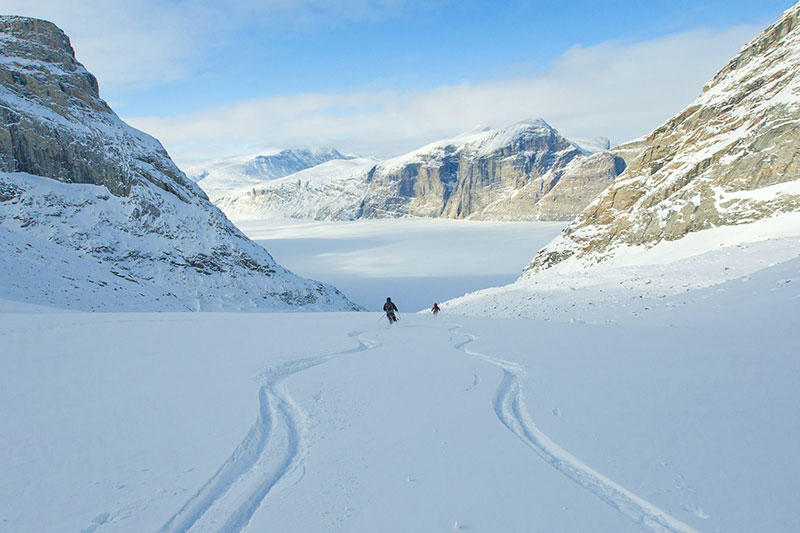
We understand that booking a trip like this is a big endeavour. Please reach out to us with any questions that you might have regarding your upcoming adventure.